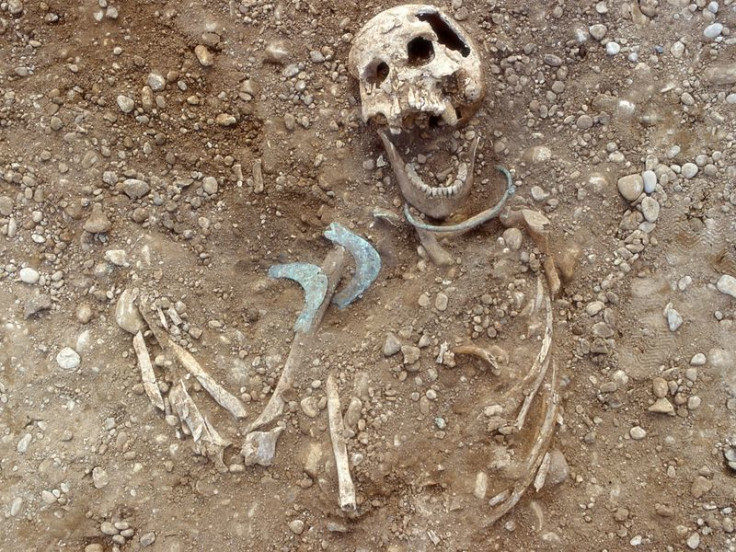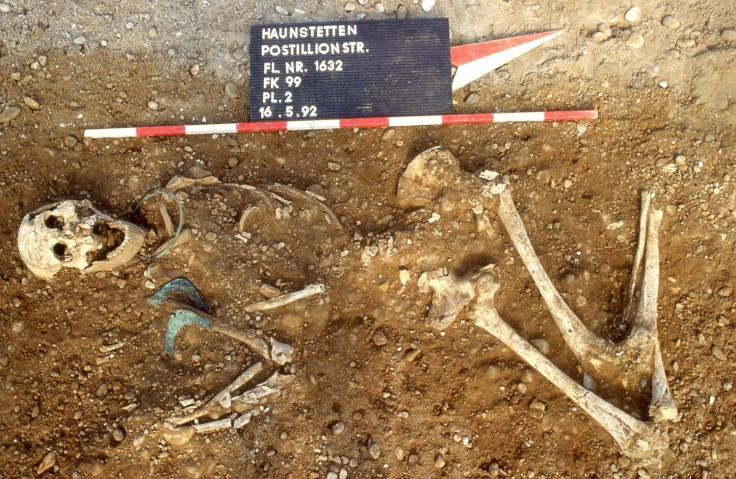Women Are Key To History Of Human Migration, Bones Show

Women were the adventurers of the early Bronze Age, moving around Europe and spreading culture as they went.
That’s the finding of a new study in the Proceedings of the National Academy of Sciences that used DNA to trace the origins of people who died in an area called the Lechtal, a valley in southern Germany and western Austria. Researchers analyzed the remains of 84 people buried there between 2500 and 1650 BCE, finding that most of the women had originally come from other places but migrated to the Lechtal as adults and were integrated into the society.
The scientists looked at both the women’s genetics and the chemical makeup of their bones — different geographical areas leave behind different signatures in their inhabitants.
With the genetic analysis, “we see a great diversity of different female lineages, which would occur if over time many women relocated to the Lech Valley from somewhere else,” researcher Alissa Mittnik said in a statement from the Max Planck Institute for the Science of Human History.
The isotope analysis, done on their molars, showed levels of the element strontium that also indicate the women were not from the area.
Even though they were newcomers to the Lechtal, probably migrating from central Germany or from Bohemia, the western part of Czechia, the women were fully integrated, establishing families and later being buried in local cemeteries, which were linked to individual homes, in the same way the native people were. Over the generations, there could have been dozens of people buried in these cemeteries.
The men, on the other hand, usually stayed in the same area where they were born. This type of immigration pattern is known as “patrilocal.”
According to the researchers, the pattern of men staying put and women migrating into the Lechtal continued for hundreds of years in the villages along this fertile valley, as the Europeans were moving from the Stone Age to the Bronze Age.
The movement of the females may have “played a significant role in the exchange of cultural objects and ideas, which increased considerably in the Bronze Age, in turn promoting the development of new technologies,” the institute said. “From an archaeological point of view, the new insights prove the importance of female mobility for cultural exchange in the Bronze Age.”
The findings also tell scientists a little more about how humans moved around the continent during those prehistoric times.

Clues about those migrations are cropping up all the time, in more than just skeletons. Another study recently showed how people settled across Eurasia when they analyzed a wooden chest found in the Swiss Alps dating back to the early Bronze Age and found it contained the remnants of grains, including wheat. It helps to fill a gap in understanding about the beginning of agriculture and the diets of ancient people moving across the continents.
The genetic and isotope analysis performed on the bones of the women buried in the Lechtal are also helping to close a gap in information.
“Individual mobility was a major feature characterizing the lives of people in Central Europe even in the third and early second millennium,” lead researcher Philipp Stockhammer said in the statement. “It appears that at least part of what was previously believed to be migration by groups is based on an institutionalized form of individual mobility.”
© Copyright IBTimes 2024. All rights reserved.





















